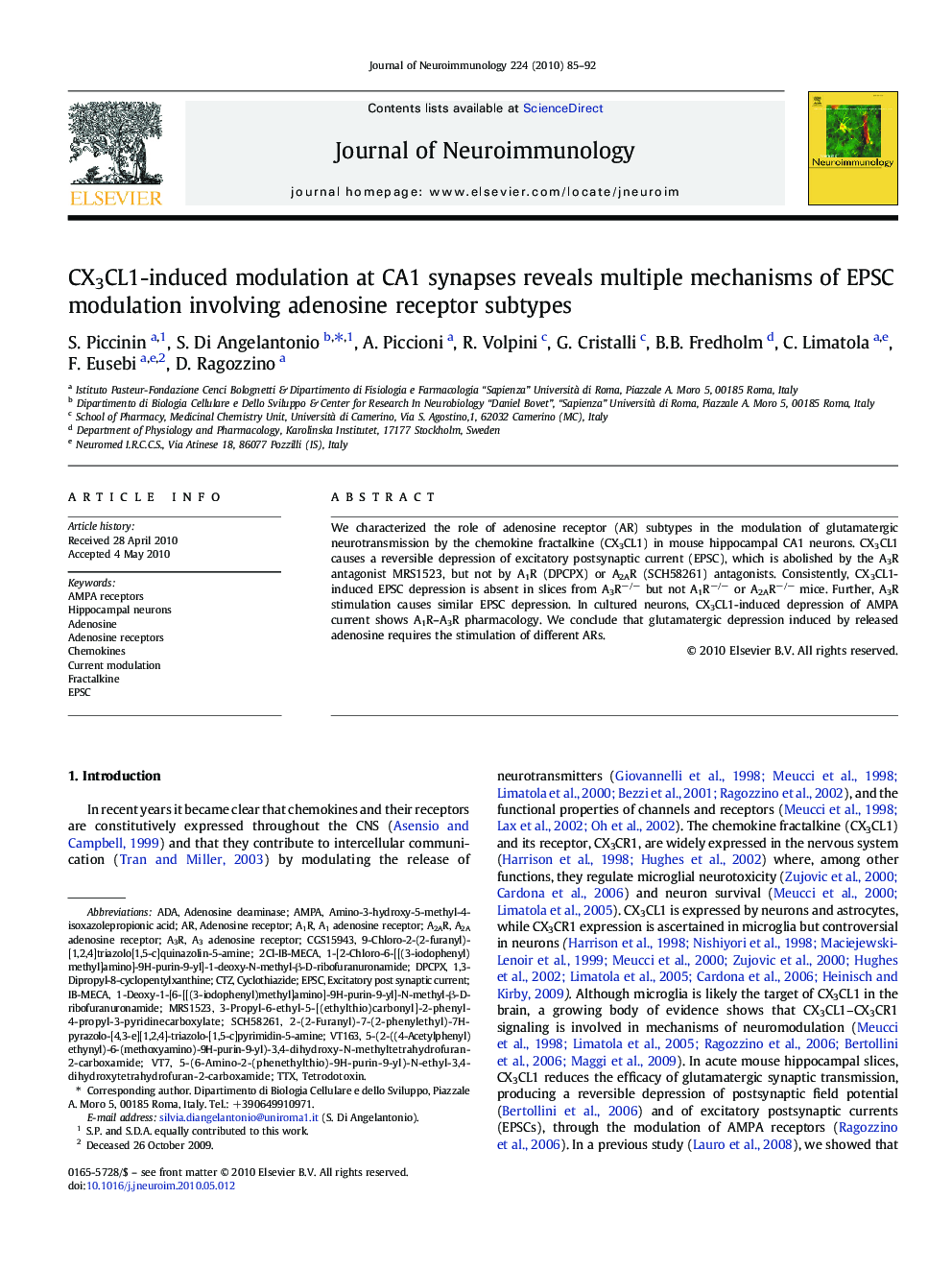| Article ID | Journal | Published Year | Pages | File Type |
|---|---|---|---|---|
| 3064637 | Journal of Neuroimmunology | 2010 | 8 Pages |
Abstract
We characterized the role of adenosine receptor (AR) subtypes in the modulation of glutamatergic neurotransmission by the chemokine fractalkine (CX3CL1) in mouse hippocampal CA1 neurons. CX3CL1 causes a reversible depression of excitatory postsynaptic current (EPSC), which is abolished by the A3R antagonist MRS1523, but not by A1R (DPCPX) or A2AR (SCH58261) antagonists. Consistently, CX3CL1-induced EPSC depression is absent in slices from A3R−/− but not A1R−/− or A2AR−/− mice. Further, A3R stimulation causes similar EPSC depression. In cultured neurons, CX3CL1-induced depression of AMPA current shows A1R–A3R pharmacology. We conclude that glutamatergic depression induced by released adenosine requires the stimulation of different ARs.
Keywords
Related Topics
Life Sciences
Immunology and Microbiology
Immunology
Authors
S. Piccinin, S. Di Angelantonio, A. Piccioni, R. Volpini, G. Cristalli, B.B. Fredholm, C. Limatola, F. Eusebi, D. Ragozzino,
